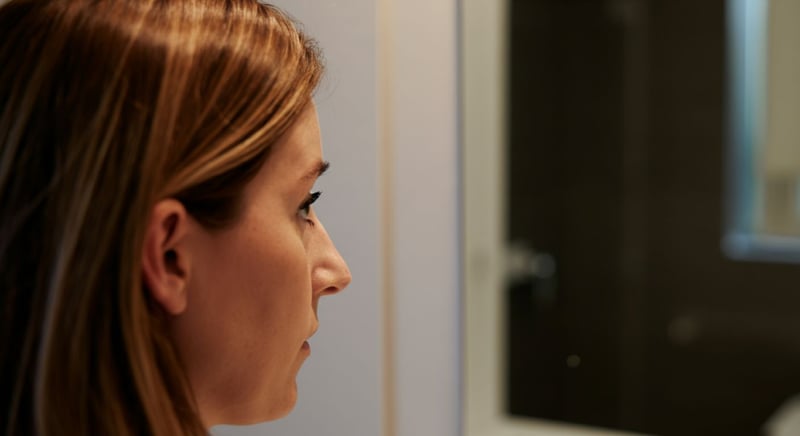Rhinoplasty: Sculpt Your Confidence, Reshape Your Life
Explore rhinoplasty at estethica—reshape your confidence and enhance your life today.
Rhinoplasty, widely known as a nose job, has become more than just an aesthetic procedure. It offers a transformative journey that not only reshapes the nose but also boosts confidence and alters lives. Whether you're dealing with medical issues such as a deviated septum or aiming to enhance your ethnic features, rhinoplasty can be a pivotal step.
Rhinoplasty Unveiled: Understanding Nasal Surgery Options
Exploring Surgical and Non-Surgical Rhinoplasty Techniques
Rhinoplasty encompasses a variety of techniques tailored to meet individual needs. From traditional surgical methods to modern nonsurgical alternatives like liquid rhinoplasty, patients have multiple options to consider. Understanding the right approach for your specific goals is essential. A traditional rhinoplasty involves reshaping the bone and cartilage through incisions, whereas a liquid nose job uses injectable fillers to alter the nose's shape. Choosing between these techniques depends on factors like the desired outcome, the extent of correction needed, and the patient's tolerance for downtime.
Understanding Rhinoplasty Options
- Open Rhinoplasty: Involves an incision across the columella, offering surgeons direct access to nasal structures, ideal for significant reshaping. This approach may be preferred for complex nasal reconstruction work.
- Closed Rhinoplasty: Utilizes incisions within the nostrils, resulting in no visible external scars. This method is often suited for more minor corrections, with potentially less swelling and recovery time.
- Liquid Rhinoplasty: Employs injectable fillers to refine the nose's contour. This non-surgical option provides temporary results, offering a less invasive alternative, particularly useful for smoothing bumps or lifting the nasal tip.
Each method provides unique advantages. Open rhinoplasty, for instance, is excellent for extensive work. In contrast, “closed rhinoplasty” is minimally invasive. Ultimately, the choice depends on a patient’s specific anatomy and desired outcome. It's vital to discuss these factors with a skilled “rhinoplasty surgeon” to determine the best course.
Factors Influencing the Choice of Rhinoplasty Technique
- Nasal Anatomy: The existing structure of the nose, including the bone and cartilage composition, dictates the feasibility of different techniques, influencing which ones will be most effective. For example, a patient with a severely deviated septum may require open rhinoplasty for complete correction.
- Desired Outcome: The patient's aesthetic goals and the extent of the desired changes greatly impact the chosen approach; simple adjustments may be achieved with non-surgical methods, while significant reshaping often needs a surgical solution.
- Recovery Time: The willingness to undergo a more extended recovery period, as required for surgical rhinoplasty, compared to the minimal downtime associated with liquid rhinoplasty, plays a significant role in deciding the appropriate technique.
Careful consideration of these factors helps ensure the selected “nose surgery” aligns with both patient expectations and medical realities. During consultation, your surgeon will guide you toward the best option. This ensures results that are both aesthetically pleasing and functionally sound.

Breathing Easy: Rhinoplasty for Deviated Septum Correction
Enhancing Breathing and Aesthetics through Rhinoplasty
A deviated septum can cause significant breathing problems, impacting daily activities and overall well-being. Rhinoplasty, particularly septoplasty, offers a solution by realigning the nasal septum to improve airflow. In addition to the functional benefits, many patients also opt to enhance their nose's appearance during the same procedure. This combined approach allows individuals to address both health concerns and aesthetic desires simultaneously. "Ethnic rhinoplasty" is a specialized consideration, ensuring techniques respect and maintain unique cultural features while correcting any functional issues. The goal is to achieve a nose that is both beautiful and functional, improving the patient's quality of life.
Benefits of Addressing a Deviated Septum with Rhinoplasty
- Improved Breathing: Correcting a deviated septum straightens the nasal passage, allowing for better airflow, which can significantly reduce snoring and instances of sinus infections.
- Enhanced Nasal Symmetry: Rhinoplasty can refine the shape and alignment of the nose, creating facial harmony and boosting self-confidence. This includes adjustments like a subtle “nose lift cost.”
- Long-Term Well-being: Combining functional correction with aesthetic enhancement can lead to improved sleep quality, reduced sinus issues, and a more positive self-image.
By choosing rhinoplasty for a deviated septum, patients not only solve breathing difficulties. Furthermore, this combined approach enhances overall facial aesthetics, which can lead to increased confidence and satisfaction. Skilled surgeons consider individual facial features when performing “nose reshaping”, ensuring a natural-looking result.
What to Expect from Rhinoplasty for a Deviated Septum
- Initial Consultation: During the consultation, the surgeon evaluates the degree of septal deviation, discusses the patient's aesthetic goals, and determines the best surgical approach, which may range from “closed rhinoplasty” to open techniques.
- Surgical Procedure: Septoplasty involves repositioning or removing parts of the septum to create a straighter airway. Rhinoplasty elements refine the nasal structure to achieve the desired aesthetic outcome.
- Recovery Process: Post-surgery, patients can expect some swelling and bruising, which subside over time. Following the surgeon's instructions carefully is vital for optimal healing, ensuring the best possible results.
Understanding these steps helps patients prepare for surgery and manage expectations. Effective communication with your surgeon throughout the process ensures a successful outcome. The procedure aims to provide lasting relief from breathing problems, along with a more pleasing nasal appearance. Some patients explore “liquid nose job” options for minor adjustments, but surgical rhinoplasty is usually needed for significant corrections.

Ethnic Rhinoplasty: Celebrating Diversity in Nasal Aesthetics
Understanding the Nuances of Ethnic Rhinoplasty
Ethnic rhinoplasty is a specialized field that requires surgeons to possess a deep understanding of different ethnic backgrounds and facial structures. It goes beyond basic rhinoplasty techniques, incorporating cultural and anatomical considerations to achieve results that harmonize with a patient's ethnic identity. The goal is to enhance, not erase, unique features, ensuring the outcome complements the individual's natural beauty. Understanding these nuances is vital for a successful result.
Key Considerations in Ethnic Rhinoplasty
- Preserving Cultural Identity: Maintaining the patient's ethnic identity is crucial. The surgeon must avoid creating a nose that looks out of character with the patient's heritage, preserving natural beauty.
- Addressing Unique Anatomical Differences: Different ethnicities often have distinct nasal structures, such as thicker skin, weaker cartilage, or wider nostrils. Understanding these variations is vital for planning the surgical approach like "closed rhinoplasty".
- Achieving Balance and Harmony: The objective is to create a nose that is balanced and proportionate to the patient's other facial features, while respecting their ethnic background and features.
This approach ensures that the rhinoplasty results enhance the patient's overall appearance. The results also stay consistent with their ethnic background, leading to higher levels of satisfaction. Skilled surgeons understand that “nose reshaping” must consider the whole face. It aims to create a natural and harmonious outcome.
The Ethnic Rhinoplasty Process
- In-Depth Consultation: A thorough consultation is crucial to understand the patient's aesthetic goals. It's the time to discuss their cultural background and concerns about preserving their ethnic identity.
- Customized Surgical Plan: Based on the consultation, the surgeon develops a customized surgical plan. It addresses the patient's specific anatomical needs and aesthetic desires, ensuring results align with their expectations.
- Post-Operative Care: Following the surgery, proper post-operative care is essential for optimal healing. This includes managing swelling, preventing infection, and attending follow-up appointments to monitor progress.
With proper care and attention to detail, ethnic rhinoplasty can deliver beautiful, natural-looking results. The results will enhance the patient's unique features and cultural background. A personalized approach ensures the nose complements the individual’s ethnicity and enhances their overall appearance. Patients also seek "nasal reconstruction" after accidents, and the process is equally sensitive to ethnic features.

Nasal Reconstruction: Restoring Form and Function After Rhinoplasty
Addressing Complex Nasal Issues with Revision Rhinoplasty
Revision rhinoplasty addresses unsatisfactory outcomes from a primary rhinoplasty, taking on both aesthetic and functional challenges with expertise. This procedure aims to correct issues like asymmetry, breathing difficulties, or unnatural contours caused by previous surgeries. Revision cases require a detailed understanding of nasal anatomy and surgical techniques to achieve the desired results. Patients seek revision rhinoplasty to restore confidence alongside proper nasal function. Around 15% of rhinoplasty patients may seek a secondary procedure to correct or refine the initial results. Addressing these issues requires specialized training and a meticulous approach to detail.
Essential Steps in Revision Rhinoplasty
- Comprehensive Evaluation: A thorough examination to understand the current nasal structure, identify the issues from previous surgeries, and determine the patient's goals for improvement. Diagnostic tools help evaluate both the internal and external nasal conditions.
- Customized Surgical Plan: Developing a tailored plan that addresses the specific problems of the prior rhinoplasty while considering the patient's aesthetic preferences. A strategy will often involve correcting structural inadequacies and enhancing overall harmony.
- Precise Surgical Execution: Employing advanced techniques to reshape the nose, correct any functional issues, and achieve a natural-looking outcome that meets the patient's expectations. Surgeons may utilize cartilage grafts or other materials to rebuild or support the nasal structure.
Factors Influencing the Outcomes of Revision Rhinoplasty
- Extent of Previous Surgery: The degree of alteration and scarring from the initial rhinoplasty significantly affects the complexity of the revision. The more extensive the prior surgery, the greater the challenge in achieving satisfactory results.
- Patient's Tissue Quality: Tissue thickness affects healing and the final aesthetic outcome. Poor tissue quality can complicate the revision and may limit the achievable improvements.
- Surgeon's Expertise: The surgeon's skill and experience in revision cases are critical. They should be adept at handling complex nasal anatomy and correcting the specific issues from previous surgeries.
Choosing a highly skilled surgeon is essential for a successful revision rhinoplasty. Achieving a natural-looking and well-functioning nose often requires patience, as the healing process can take time. Ideal candidates are seeking functional improvement after an initial surgery. The goal is to restore a sense of confidence with a naturally beautiful nose. Patients should avoid searching for "liquid nose job" when serious correction is required and carefully weigh their options.
Rhinoplasty: Everything You Need to Know
Advanced Rhinoplasty Techniques: Achieving Balanced Nasal Aesthetics and Improved Functionality
estethica employs a range of rhinoplasty techniques, from traditional surgical methods like open and closed rhinoplasty to non-surgical options such as liquid rhinoplasty. Each technique is tailored to meet individual patient needs, ensuring optimal results. The choice of method depends on factors like nasal anatomy, desired outcome, and recovery time.
estethica’s rhinoplasty surgeons possess in-depth experience with various ethnic backgrounds and facial structures, providing specialized ethnic rhinoplasty that respects and enhances unique cultural features. Their patient focused approach ensures that each surgery complements the individual's natural beauty.
Comprehensive Evaluation and Customized Surgical Plans for Successful Revision Rhinoplasty
estethica provides a thorough consultation process, including in-depth evaluation of the patient's aesthetic goals, concerns about preserving ethnic identity, and anatomical needs. This comprehensive assessment ensures the development of a customized surgical plan that aligns with patient expectations and delivers natural-looking results.
estethica aims to achieve a natural-looking and well-functioning nose, with dedicated follow-up care for patients undergoing rhinoplasty or revision rhinoplasty. By prioritizing patient safety and health, estethica achieves lasting relief from breathing problems and enhances nasal appearance.
Frequently Asked Questions
What is rhinoplasty and what are its different types?
How can rhinoplasty help with a deviated septum?
What is ethnic rhinoplasty and what are its key considerations?
When is nasal reconstruction or revision rhinoplasty necessary?
What factors influence the choice of rhinoplasty technique?
Ready to discover your personalized path to aesthetic excellence and well-being?
📞 Book Your Free Consultation Today!